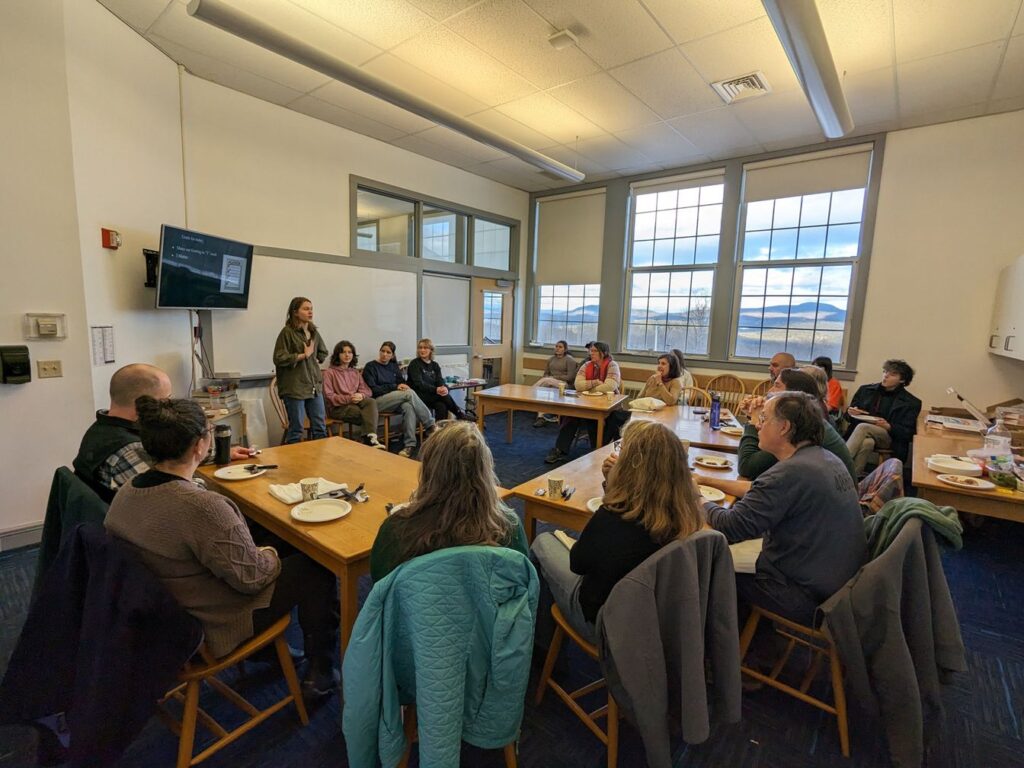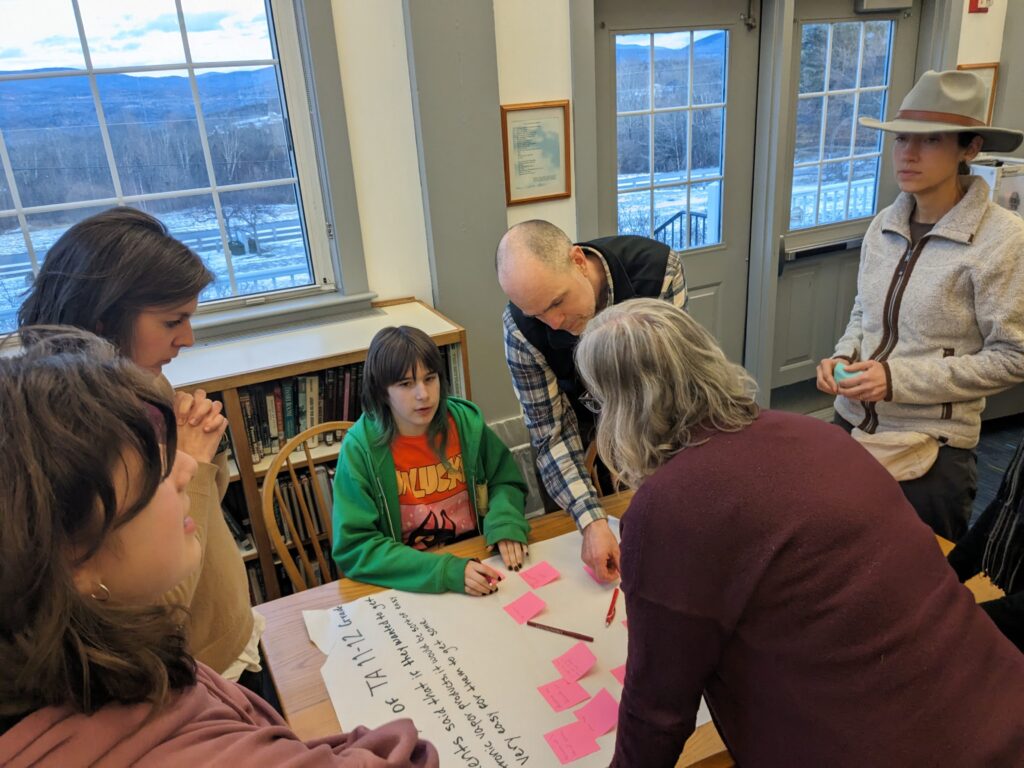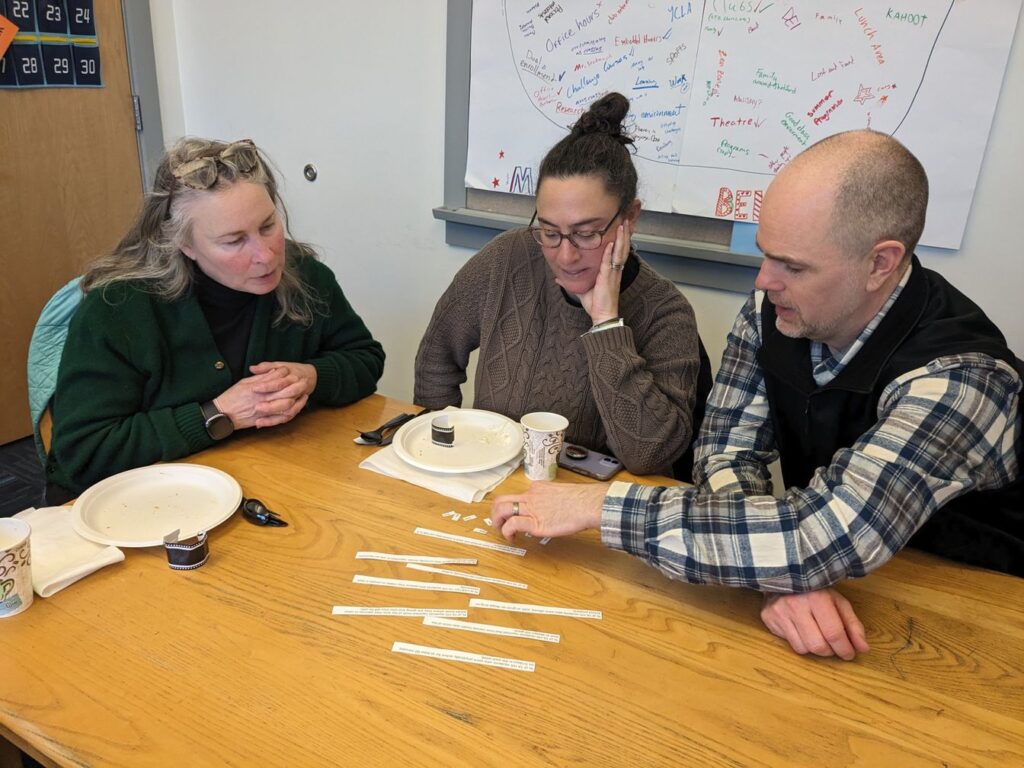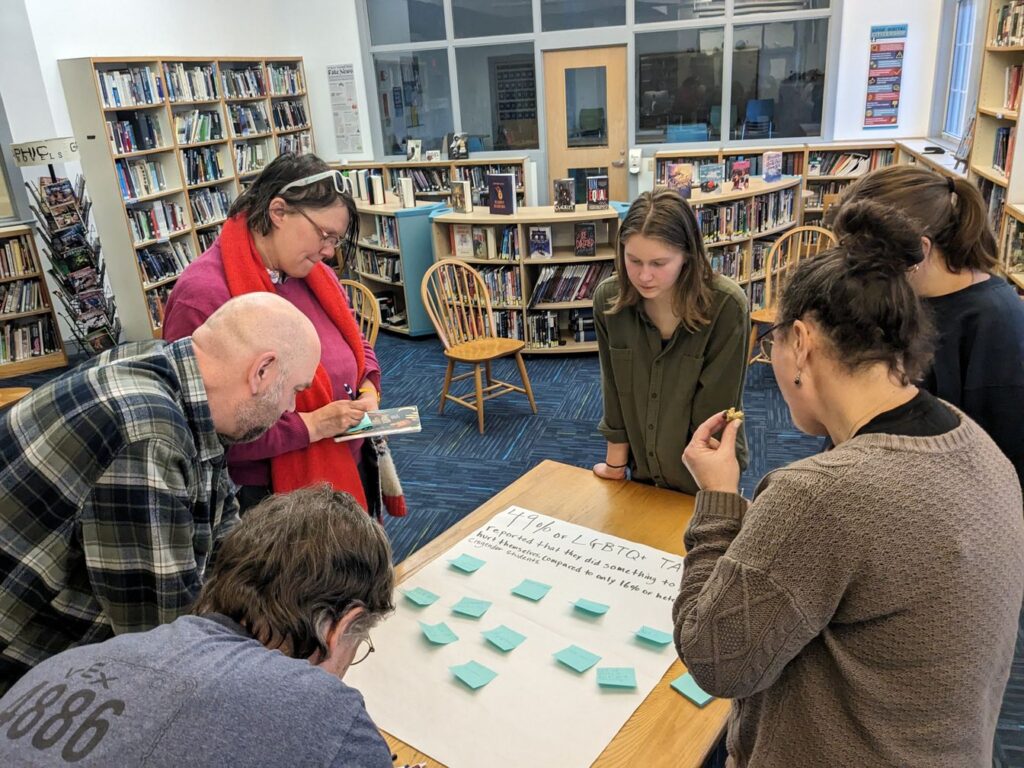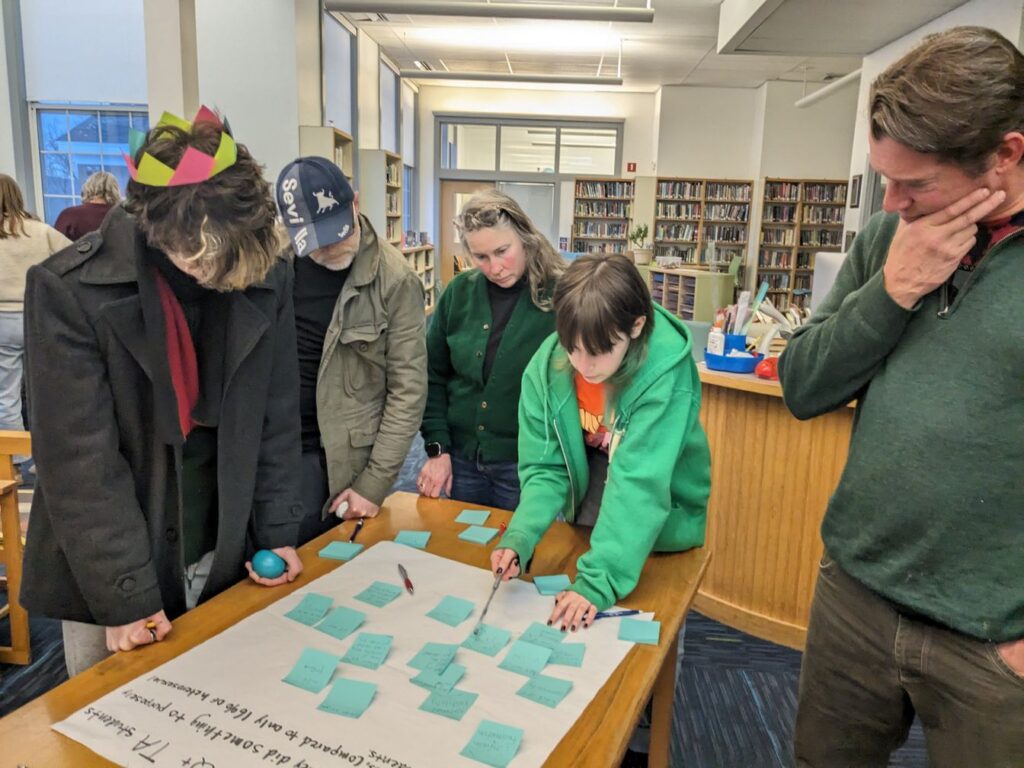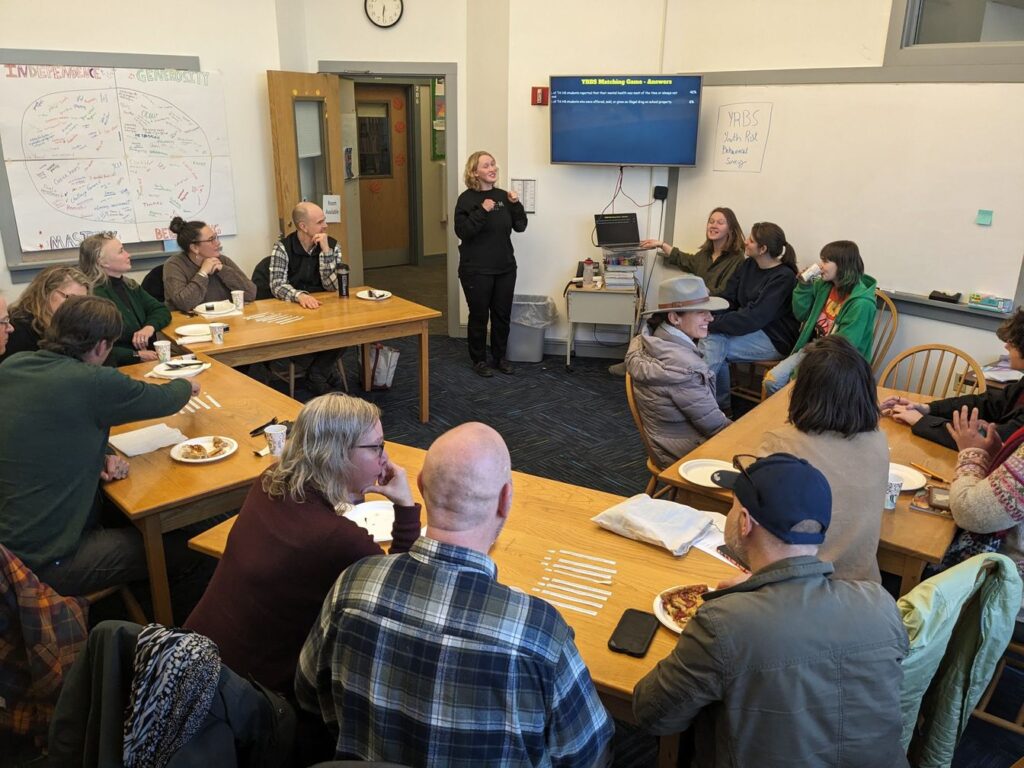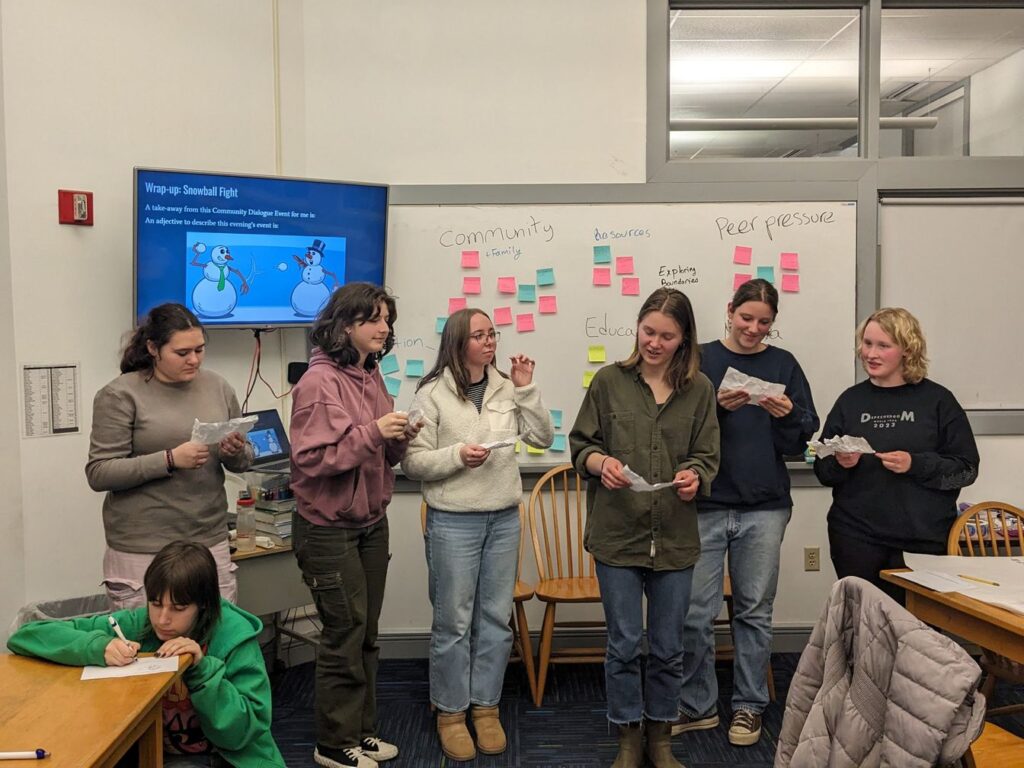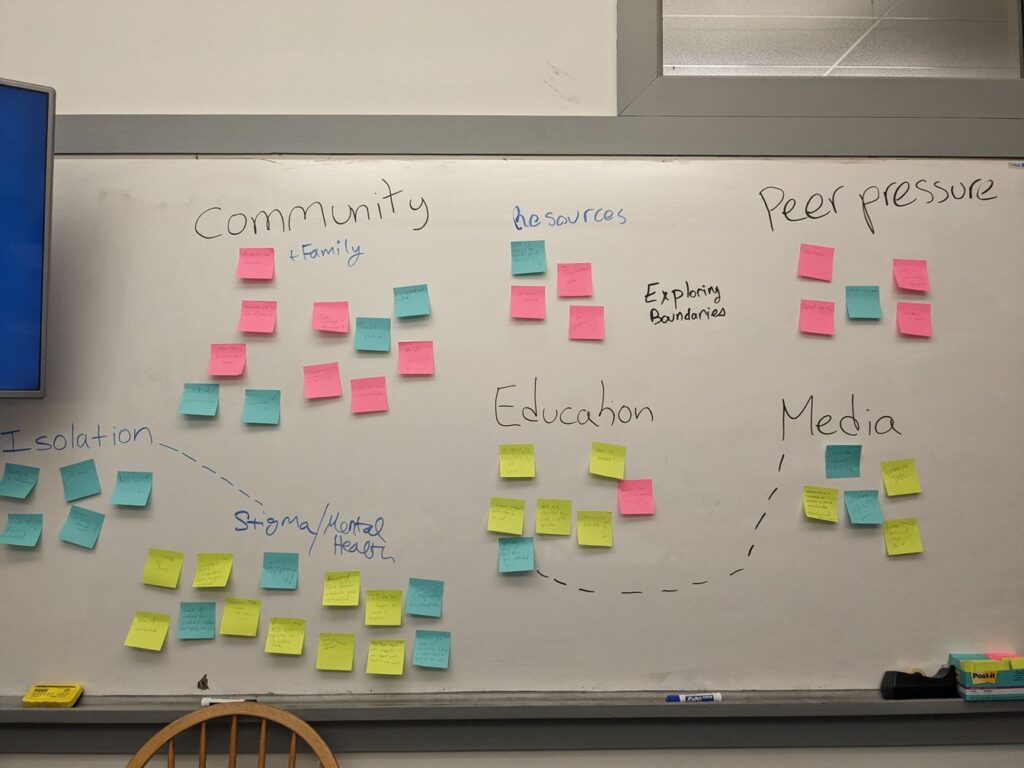‘Getting to Y’ Students Lead Community Dialogue
March 28, 2024
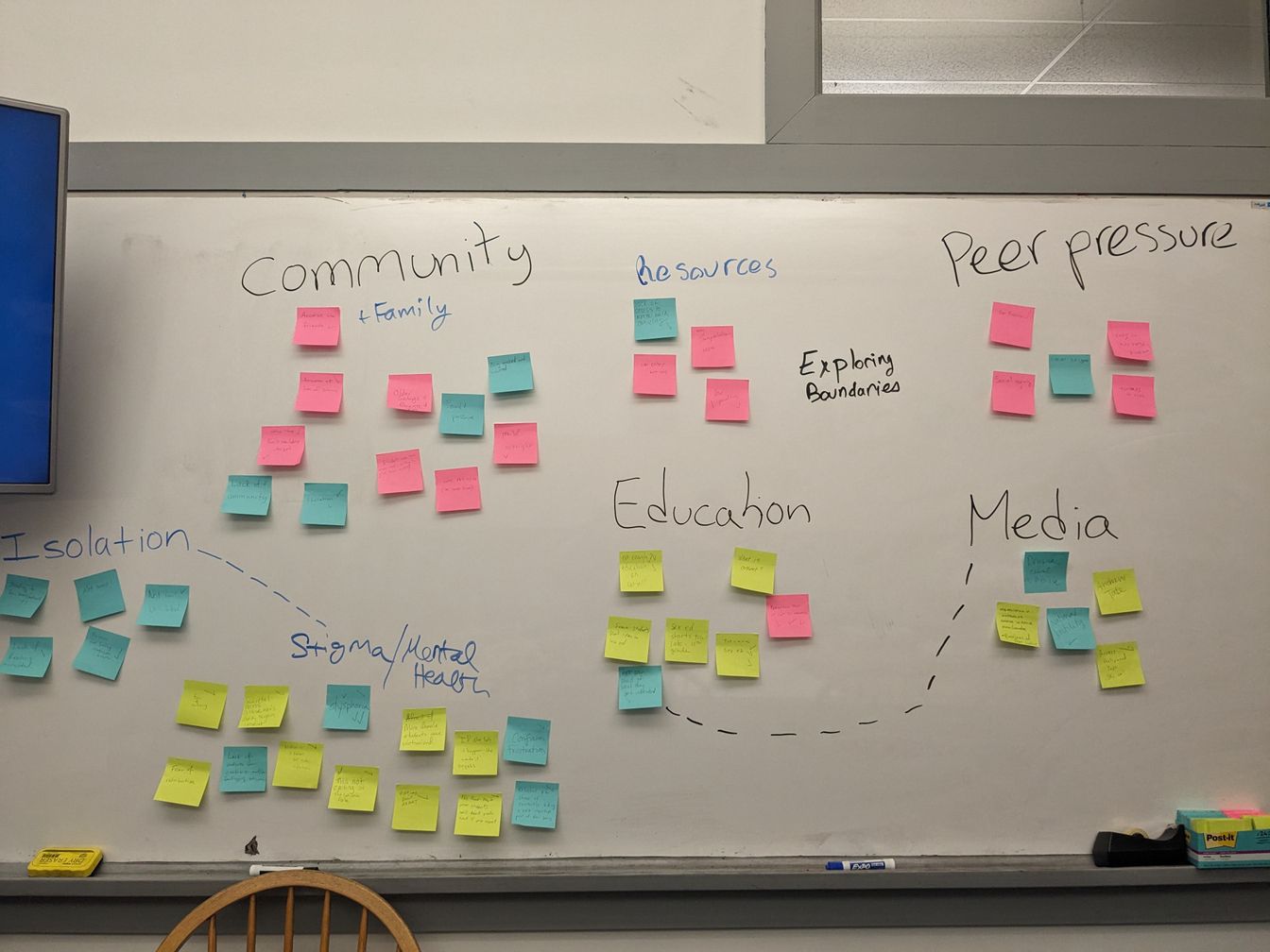
Guest post by Getting to Y team member Margaret Smallwood ’24 –
TA students on the ‘Getting to Y’ team facilitated a Community Dialogue on March 21, with parents, peers, and siblings in attendance. Getting to Y is a leadership club focused on public health data, issues, and solutions. Team members focus on data in the biennial Youth Risk Behavior Survey, administered nationally, and bring meaning the data, identify strengths and concerns for their local community, and work on solutions to improve quality of life for their peers.
The community dialogue on March 21 was one of a series of events led by TA’s Getting to Y team, including a data analysis retreat they led with TA students in December. At that retreat TA students identified 3 main strengths and concerns coming out of our school’s YRBS data that they wanted the Getting to Y team to focus on this year.
The 3 identified concerns were:
- 49% of LGBTQ+ TA students reported that they did something to purposely hurt themselves without wanting to die compared to 16% of heterosexual cisgender students,
- 32% of female TA students reported that someone had done sexual things to them that they did not want, compared to 5% of male students; and,
- 75% of TA 11-12 grade students said that if they wanted to get electronic vapor products, it would be sort of easy or very easy for them to get some.
The community dialogue was designed as a way for people in the community, especially adults, to look at these data points that were chosen by students and explore possible root causes and solutions. The evening event had a good turnout, with approximately 15 adults in attendance including TA faculty, parents, and even a spokesperson for WISE – a local organization that aims to prevent gender-based violence. The Getting to Y members educated the audience about the YRBS and showed examples of what that data can look like via a data matching game. They then celebrated TA’s strengths before diving into the chosen concerns and brainstorming root causes. Affinity mapping brought several “ah ha” moments to the event as it helped to find connections between the root causes, like stigma, education, isolation and mental health, to name a few, and the community members started brainstorming some possible solutions.
To finish off the event, attendees were asked what their biggest takeaway was and an adjective to describe their experience. Multiple people said that the Community Dialogue was “educational” and “inspiring.” There were some great comments about how “seemingly unrelated things are often related” and that “solutions are harder to identify than problems.”
The TA Getting to Y members delivered a polished and professional event which tackled challenging topics. Our community is lucky to have such a dedicated group of students who work throughout the year to effect sustainable change in youth behavior, community and school culture. Great outcomes happen when our youth are trusted to have a voice in what matters most to them.
